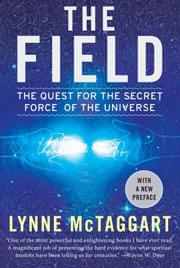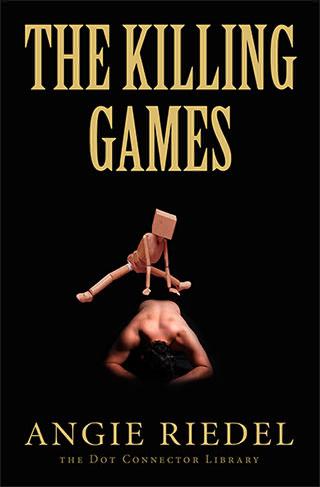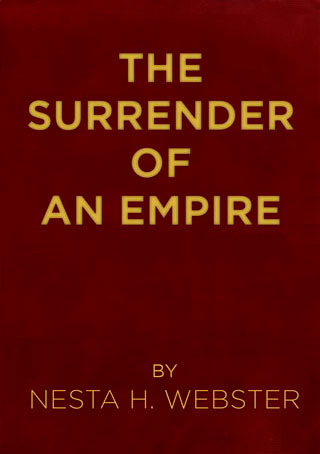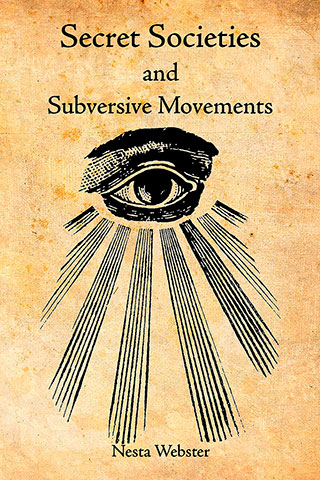Misogyny: The World’s Oldest Prejudice
Misogyny: The World's Oldest Prejudice
July 31, 2013
her shaved head
like a stubble of black corn
her blindfold a bandage
her noose a ringSeamus Heaney,
‘Punishment’ from North (1975)
On 22 June 2002, in a remote area of the Punjab, a Pakistani woman named Mukhtaran Bibi was sentenced on the orders of a tribal council to be gang raped because allegedly her brother had been seen in the company of a higher-caste woman. Four men dragged her into a hut ignoring her pleas for mercy.
‘They raped me for one hour, and afterwards I was unable to move,’ she told reporters. Hundreds witnessed the sentencing but none offered to help.
On 2 May 2002, Lee Sun-Ok, a defector from North Korea, testified before the House International Relations Committee in Washington DC about conditions in the Kaechon Women’s Prison in North Korea where some 80 per cent of the prisoners are housewives. She witnessed three women giving birth on a cement floor. ‘It was horrible to watch the prison doctor kicking the pregnant women with his boots. When a baby was born, the doctor shouted, “Kill it quickly. How can a criminal in the prison expect to have a baby?'”
Nigeria, 2002. Amina Lawal was sentenced to death by stoning for having a child out of wedlock. She was sentenced to be buried up to her neck and rocks thrown at her head until her skull was crushed.
Fayetteville, North Carolina. In Fort Bragg army base, over a period of just six weeks in the summer of 2003, four women died at the hands of their enraged husbands. One was stabbed more than fifty times by the man who once claimed he loved her.
East Africa. In an area stretching from Egypt to Somalia, it is estimated that between 80 per cent and 100 per cent of all women have suffered genital mutilation. Some have fled to the United States seeking asylum. The women have argued that they are entitled to the same protection as refugees escaping political oppression. But the struggle in which they are engaged is far older than any campaign for national, political or civil rights.
***
I grew up in Northern Ireland, a world away from the Punjab, North Korea and East Africa. But it was a place where the word ‘cunt’ expressed the worst form of contempt one person could feel for another. If you loathed or despised a person, ‘cunt’ said it all.
The word was scrawled on the walls of rubbish-strewn back alleyways or in public toilets reeking of urine and faeces. Nothing was worse than being treated like a ‘cunt’ or nothing so stupid as a ‘stupid cunt’.
Belfast, Northern Ireland, the city where I grew up, had its own peculiar hatreds. Its sectarian animosities over the years have made it a byword for violence and bloodshed. But there was one thing on which the warring communities of Catholics and Protestants could agree: the contemptible status of cunt.
Belfast was little different in this way from other poor, industrialized parts of Britain where a mundane form of contempt for women, wife beating, was a fairly regular occurrence. Men would step in to defend a dog from being kicked around by another man, but felt no obligation to do the same when faced with brutality being inflicted on a wife by her husband. Ironically, this was because of the ‘sacred’ status of the relationship between man and wife, which barred intervention.
When political violence broke out in the late 1960s, misogynistic behaviour expressed itself more publicly. Catholic girls who dated British soldiers were dragged into the street, bound and held down (often by other women), while the men hacked and shaved off their hair, before pouring hot tar over them and sprinkling them with feathers. They were then tied to a lamp post to be gaped at by the nervous onlookers, with a sign hung around their necks on which was scrawled another sexual insult: ‘whore’.
Perhaps we were imitating the French, to whom the English-speaking nations usually defer in matters sexual, having seen those news pictures as France was liberated of what befell women found guilty of going out with German soldiers. But we were also following the inner logic of our own powerful feelings, the same rage which we articulated with monosyllabic concision in the word ‘cunt’. It was a logic that had been articulated some 1,800 years earlier by Tertullian (AD 160-220), one of the founding fathers of the Catholic Church, who wrote:
You are the devil’s gateway; you are the unsealer of that forbidden tree; you are the first deserter of Divine law. You are she who persuaded him whom the devil was not valiant enough to attack. You destroyed so easily God’s image, man.
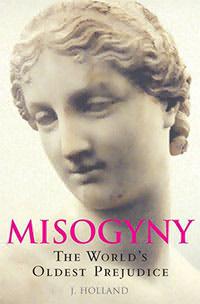 Misogyny, the hatred of women, has thrived on many different levels, from the loftiest philosophical plane in the works of Greek thinkers, who helped frame how Western society views the world, to the back streets of nineteenth-century London and the highways of modern Los Angeles, where serial killers have left in their wake a trail of the tortured and mutilated corpses of women. From the Christian ascetics of the third century AD, to the Taliban rulers of Afghanistan in the late 1990s, it has directed its rage at women and tried to suppress their sexuality. At least once, during the witch-hunts of the late Middle Ages, it has launched what amounted to a sexual pogrom, burning hundreds of thousands — some historians say millions — of women at the stake throughout Europe. It has been expressed by some of the greatest and most renowned artists that civilization has produced, and celebrated in the lowest, most vulgar works of modern pornography. The history of misogyny is indeed the story of a hatred unique as it is enduring, uniting Aristotle with Jack The Ripper, King Lear with James Bond.
Misogyny, the hatred of women, has thrived on many different levels, from the loftiest philosophical plane in the works of Greek thinkers, who helped frame how Western society views the world, to the back streets of nineteenth-century London and the highways of modern Los Angeles, where serial killers have left in their wake a trail of the tortured and mutilated corpses of women. From the Christian ascetics of the third century AD, to the Taliban rulers of Afghanistan in the late 1990s, it has directed its rage at women and tried to suppress their sexuality. At least once, during the witch-hunts of the late Middle Ages, it has launched what amounted to a sexual pogrom, burning hundreds of thousands — some historians say millions — of women at the stake throughout Europe. It has been expressed by some of the greatest and most renowned artists that civilization has produced, and celebrated in the lowest, most vulgar works of modern pornography. The history of misogyny is indeed the story of a hatred unique as it is enduring, uniting Aristotle with Jack The Ripper, King Lear with James Bond.
At the most private level of all, the sex act itself became a form of humiliation and shame — humiliation for the woman who experienced it and shame for the man who perpetrated it. In Belfast slang the verb ‘to stiff someone can mean two things: ‘to make love to’ or ‘to kill’. But death here does not imply the French sense of ‘la petite mort’, which describes the abandonment of self in the ecstatic swoon of orgasm. ‘I just stiffed that cunt’ can mean ‘I just shot him dead’ or T just fucked her’. Either way, the victim is now discarded, discountable, essentially dehumanized.
I know that tracing the history of any hatred is a complex matter. At the root of a particular form of hatred, whether it be class or racial hatred, religious or ethnic hatred, one usually finds a conflict. But, on the depressing list of hatreds that human beings feel for each other, none other than misogyny involves the profound need and desires that most men have for women, and most women for men. Hatred coexists with desire in a peculiar way. This is what makes misogyny so complex: it involves a man’s conflict with himself. Indeed, for the most part, the conflict is not even recognized. In Ireland, as in the rest of the Catholic world, this is expressed in what looks at first like a paradox. Women might be held in contempt on the street, but walk into any Catholic church and you find a woman on a pedestal being revered, even worshipped.
***
Our church in Belfast was a nondescript structure, typical of Irish churches, most of which were built in the late nineteenth and early twentieth centuries — that is, long after the glorious phase of Catholic architecture had ended and been replaced by one of sentimental piety. It was built of red brick, like the little rows of houses around it. Its only flourishes of beauty were a pseudo-Gothic doorway and a porphyry holy-water font at the entrance. By the last mass on a Sunday, tiny black clumps of furry dirt had coagulated at the bottom of the little basin.
Upon entering the darkened interior, one’s attention was arrested by the statue of a young woman in a blue mantle, a halo of stars around her head, her pale, dainty feet trampling on the head of a writhing serpent. The serpent’s forked tongue was thrust out menacingly from a garish red, gaping mouth. But its poisonous wrath is rendered impotent: ‘And that great dragon was cast out, that old serpent, called the Devil, and Satan, which deceiveth the whole world.’ (Revelations 20:2).
A woman who was a virgin had vanquished the Devil through her purity, which was unassailable in its perfection. We were made to understand that the evil over which she stood in triumph, and for which she was exalted, was the evil of the flesh, of lust, the desire to commit unmentionable acts. But we were distracted by the fact that the snake was too obvious a sexual symbol to be ignored. In celebrating the triumph of purity over bodily desire, the statue instead asserted a latent sensuality — the way her garment was slightly lifted up to reveal her dainty, feminine feet in such intimate, physical contact with the slithering, writhing snake. We would one day learn that repression of sex is just another form of sexual obsession, like pornography.
By fifteen, my friends and I all knew what it was she was really trampling into the dust. This was the role that women in our society were expected to perform — to deny desire in others and crush it in themselves.
It took no training in philosophy to decipher the misogyny behind the use of the word ‘cunt’. But the exaltation of the Virgin Mary as Mother of God proved that misogyny can push a woman upwards as well as downwards. In either direction, the destination is the same: woman dehumanized.
Though misogyny is one of the most tenacious prejudices, it has changed and evolved over the centuries, moderated or exacerbated by prevailing social, political and, above all, religious currents. A dramatic transformation in the history of the hatred of women occurred with the rise of Christianity and the promulgation of the doctrine of Original Sin.
As explained in this book, the doctrine was a product of the confluence in Christianity of three powerful currents in the ancient world: Greek philosophical Platonism; Judaic patriarchal monotheism; and Christian revelation, as expressed in the assertion that Christ was the Son of God, and that in him God himself became incarnate and intervened directly in human affairs. This unprecedented convergence of philosophical, mystical and historical claims helped create a powerful ideological underpinning for the world’s oldest prejudice when it made conception itself a sin — Original Sin. Woman, even as she was exalted in the form of the Virgin Mary, was at the same time held responsible for perpetrating this sin, the falling away of man from the perfect state of grace with God into the horror of the reality of being.
The story of how this dual process of dehumanization — upwards and downwards — might have occurred takes us far beyond the cult of the Virgin Mary. In effect, it is the story of the oldest prejudice. It has survived in one form or another over immense periods of time, emerging seemingly unchanged from the cataclysms that have engulfed empires and cultures, and swept away their other modes of thought and feeling. It persists after philosophical and scientific revolutions have seemingly transformed permanently how we look at the world. When social and political upheavals have refashioned relationships between citizens and the state, and democracies vanquished oligarchies and driven absolute monarchs from power, it comes back to haunt our ideals of equality, with the persistence of a ghost that cannot be exorcised. It is as up to date as the latest porn website and as old as civilization itself.
For we are the inheritors of an ancient tradition, going back to the origins of the great civilizations of the past which have so profoundly shaped our consciousness, and fashioned the dualism that lies behind our efforts to dehumanize half the human race. ‘The duality of the world is beyond comprehension,’ wrote Otto Weininger, the twentieth-century Austrian thinker, and perhaps the last Western philosopher ever to attempt to justify misogyny on philosophical grounds, ‘it is the plot of man’s fall, the primitive riddle. It is the binding of eternal life in a perishable being, of the innocent in the guilty.’
Understanding the history of this ‘riddle’ may help us unravel it. But to trace its roots, it is necessary to look at what may have preceded it. If for centuries women have been an object of contempt, was there a women’s history BC — “before contempt’, before misogyny? That is the question.
It is the question at any rate that has exercised the thoughts of many, mostly feminist historians and scholars who have sought to go beyond the conventional history of women, which consists largely of the history of their relationship to men. Indeed, in scholarly terms, until very recently, women have been seen in relation to precious little else.
History has been (and to a large extent remains) ‘his story’ — the story of men’s impact upon the world around them in all its complex aspects, religious, political, militaristic, social, philosophical, economic, artistic and scientific. Many besides feminists have characterized history as, in effect, the product of a patriarchal society in which women’s roles and contributions have been discounted or ignored. Throughout that history, misogyny has manifested itself in different ways at different times. Indeed, for some, what we call history is merely the tale that patriarchy wants to tell, and misogyny is its ideology, a system of beliefs and ideas the aim of which is to explain the domination of men over women.
Many feminists, frustrated with this historical form of confinement, have turned to prehistory for relief, and constructed a remoter past in which matriarchy prevailed and the higher status it accorded to women presumably protected them from the kind of contempt that would later blight their lives and distort how they are viewed.
In one version or another, beginning in the nineteenth century, the matriarchal model has exercised at times an intense appeal to a remarkably wide range of individuals, from Friedrich Engels and Sigmund Freud to members of the spiritualist feminist movement of the late twentieth century. It has been espoused by such serious scholars as the archaeologist Marija Gimbutas, and popularized in such best-selling books as Who Cooked The Last Supper: The Women’s History of the World by Rosalind Miles. The latter states:
For in the beginning, as humankind emerged from the darkness of prehistory, God was a woman. And what a woman! … The power and centrality of the first woman-God is one of the best-kept secrets of history.
Miles gives a chronology of the worship of the Great Goddess (which is equated with the prevalence of matriarchal societies) and claims that ‘the sacred status of womanhood lasted for at least 25,000 years — some commentators would push it back further still, to 40,000 years or even 50,000. In fact, there never was a time at this stage of human history when woman was not special and magical.’
The problem is finding evidence for the existence of matriarchy. And even if there were proof that it existed, this would not in itself change the fact that women’s relationship to men defines their role in history: matriarchal history merely replaces a role that is subordinate with one that is dominant. For much of the time matriarchy is supposed to have prevailed, written records do not exist. Artefacts such as the so-called Venusian figurines of Palaeolithic origin, and found from southern France to Siberia, are frequently cited as proof of the widespread worship of the Great Goddess. However, they are notoriously difficult to interpret. To some exponents of the matriarchal interpretation, they are proof of the awe and veneration accorded women at the time; but others have interpreted the figurines as grotesque, inspiring not awe and veneration but horror. However, even if it could be proved that the figurines represent a Great Goddess cult, history demonstrates that there is no necessary link between goddess worship and a high social status for women — the cult of the Virgin Mary, for instance, was in the ascendant during the witch burnings of the Middle Ages.
In Europe, it is much later than the Palaeolithic and only when we come to the Celts that we find a pre-Classical culture offering some textual basis for claims that, before the Greeks and Romans stamped their hegemony on history, a form of matriarchy prevailed. The evidence comes both in the form of the Celtic myths and sagas, and in the writings of the Greeks and Romans of the time about what seemed to them the shocking freedoms the Celts accorded their women.
The temptation to believe in an Arcadia, a lost golden age when the relations between men and women were without conflict, is very strong, but must be resisted. The most we can hope for, in Celtic society at any rate, is evidence of a more balanced relationship between the sexes. Misogyny will show that this balance was lost with the rise of Greece and Rome, and will examine the dualism, identified by Weininger, that those civilizations created. In this dualism, men were the thesis, and women the antithesis.
It is in the nature of dualism (unlike the dialectic) that there be no synthesis — the sexes are doomed to perpetual conflict. Women were faced with a battery of philosophical, scientific and legal arguments aimed at proving and codifying their ‘inherent inferiority’ to men. Later, Christianity added a theological one, with such profound impact that its ramifications are with us today.
The rise of liberal democracy in the post-Enlightenment era saw the beginning of the long struggle for political and legal equality for women. But misogyny has never let progress get in its way. When political and legal equality in the West was followed by the sexual revolution, this produced a backlash from both fundamentalist Protestants and conservative Catholics. In many Third World nations the drive for women’s rights threatened deeply held religious ideas and social customs. This culminated in Taliban-ruled Afghanistan — a state with the suppression of women as a primary aim. It legislated women out of public life, denying them basic rights — comparable to the way the Nazis’ Nuremberg Laws turned German Jews into non-persons. Rarely, if ever, has the aim of misogyny, to dehumanize half the human race, been made more explicit.
The hatred of women affects us in ways that no other hatred does because it strikes at our innermost selves. It is located where the private and public worlds intersect. The history of that hatred may dwell on its public consequences, but at the same time it allows us to speculate on why, at the personal level, man’s complex relationship to woman has permitted misogyny to thrive. Ultimately, such speculation should allow us to see how equality between the sexes will eventually be able to banish misogyny and put an end to the world’s oldest prejudice.
